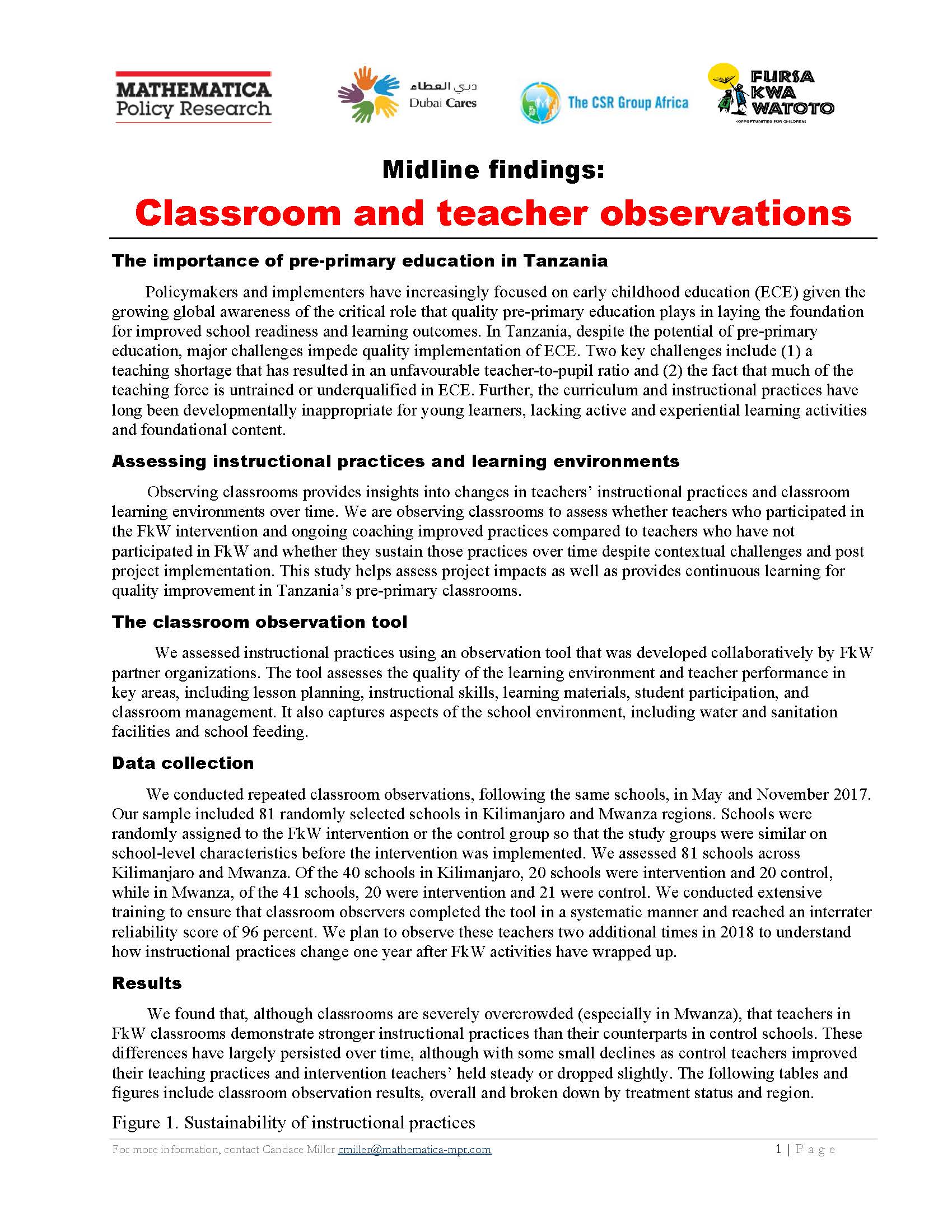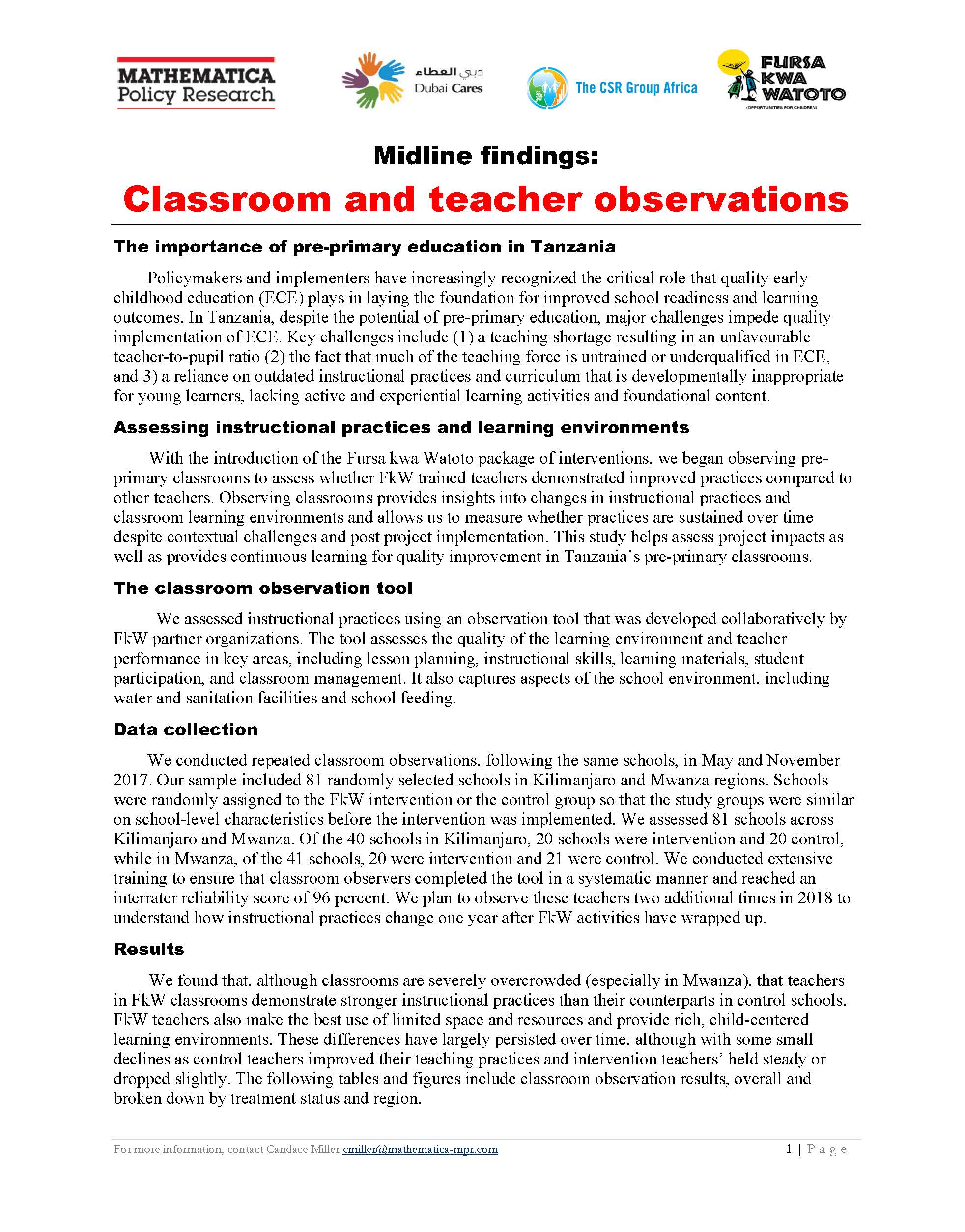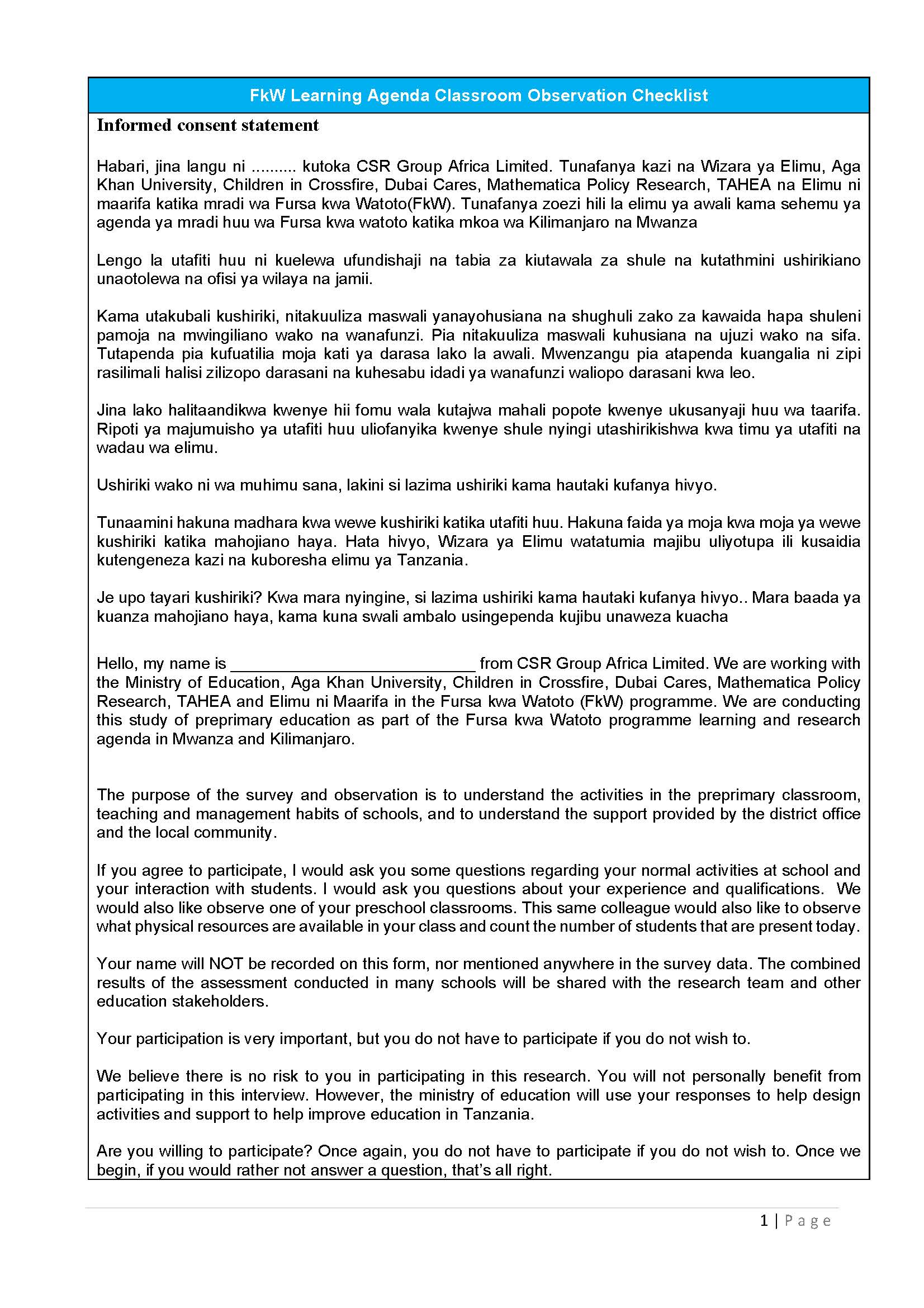Teacher Work Force
Despite the well-established evidence on the impacts of early childhood education, major challenges impede quality implementation in pre-primary classrooms. Two key challenges include (1) a teaching shortage that has resulted in an unfavourable teacher-to-pupil ratio and (2) the reality that much of the teaching force is untrained or underqualified in early childhood education.
First, the national standard for the pupil- qualified-teachers-ratio (PQTR) was set at 1:25 in pre-primary classrooms.
In 2016, the PQTR in government schools was estimated at one teacher to 369 pre-primary students. The pupil to teacher ratio (PTR) was 1:135.
In Moshi and Mwanza, as of July of 2016, we found the average teacher-PTR was 1:85 students in Mzanza and 1:44 in Moshi.
In 2016, the total number of pre-primary teachers in government schools country-wide was 10,994 teachers. An estimated 59,538 teachers are required to reach the national standard. This means the country would need an additional 55,509 qualified pre-primary teachers to meet the PQTR, or 48,544 teachers if the qualification is relaxed.
Next, to be qualified, teachers must have a “grade A” teaching certificate. However, pre-service teacher training colleges only recently began to offer the certificate for pre-primary education. Thus, most qualified teachers have no training in early childhood development and lack competencies to teach pre-primary education. In practice, schools often recruit and use teachers with lower level certificates, or paraprofessionals.
Teachers and paraprofessionals performance
Paraprofessionals performed as well as certified teachers in most measures of instructional and classroom management practices and scored within two to six percentage points of teachers’ on the total average score. Paraprofessionals demonstrated similar skills and practices to teachers at teach assessment point.
As the collaborative implemented the FkW training, we found positive results indicating that teachers’ and paraprofessionals’ demonstrated improved instructional practices, with improved classroom environments, over the course of the training and mentoring visits. We found that teachers and paraprofessionals demonstrated improved instructional practices over time. We see a steady upward trajectory in performance indicating that teachers developed skills and improved their methods and procedures, use of learning resources, classroom management, and other practices.
Assessing instructional practices and learning environments over time
We continue to observe classrooms to gain insights into changes in teachers’ instructional practices and classroom learning environments over time. We will continue to observe, to assess whether teachers who participated in the FkW intervention and ongoing coaching improved practices compared to teachers who have not participated in FkW. Some teachers have also participated in the TIE training. We will assess the sustainability of the FkW approach and whether teachers continue to implement improved practices despite contextual challenges and post project implementation.
The classroom observation tool
We are using the classroom observation tool to measure instructional practices. The tool was developed collaboratively and over time by FkW partner organizations. The tool assesses the quality of the learning environment and teacher performance in key areas, including lesson plan development and use, instructional strategies and skills, the quality of learning materials, student participation, classroom management, and instructional practices during pre-literacy and pre-numeracy activities. It also captures aspects of the school environment, including water and sanitation facilities and school feeding.
Data collection for the Learning Agenda
We conducted classroom observations from May through June 2017 (and continue to observe through 2018). Our sample included 81 randomly selected schools in Kilimanjaro and Mwanza regions. Schools were randomly assigned to the FkW intervention or the control group so that the study groups were similar on school-level characteristics before the intervention was implemented. Of the 81 schools split across Kilimanjaro and Mwanza and half were intervention and half were control schools. In other words, of the 40 schools in Kilimanjaro, 20 schools were intervention and 20 control, while in Mwanza, of the 41 schools, 20 were intervention and 21 were control. We conducted extensive training in order to ensure that classroom observers completed the tool in a systematic manner and reached an inter-rater reliability score of 96 percent. Results are forthcoming.
Findings from Classroom Observations
Recommendations
Given:
The potential of pre-primary education to improve student academic and social development and other benefits;
The severe teacher shortage leading to overcrowded classrooms and reduced quality instruction in Tanzania;
The length of time required to build the cadre of certified teachers; and
The great potential of paraprofessionals to demonstrate high quality teaching practices;
We recommend considering the following:
Defining a mechanism to formalize status and remuneration of experienced paraprofessionals to help reduce the teacher shortage in pre-primary classrooms until professional teachers are available.
Paraprofessionals include individuals with secondary education, teaching experience and teacher training, as well as individuals who have lower qualifications. Any process to recognize paraprofessionals will require defining criteria.
Increase the number of providers offering certified pre-service and in-service training on pre-primary education.











